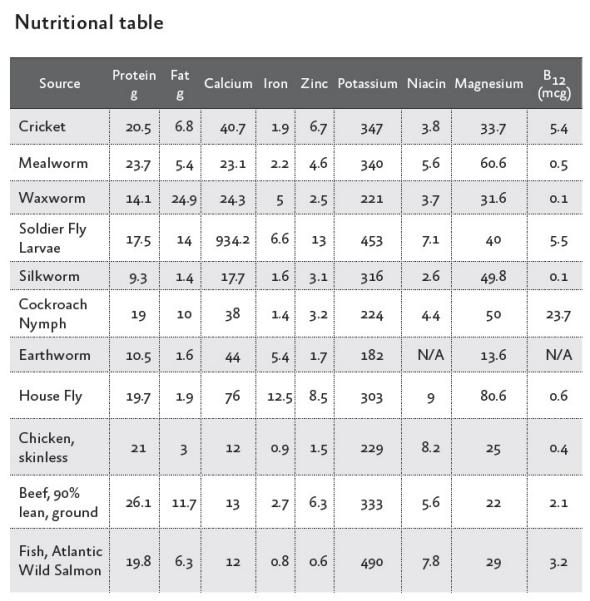I recently had a birthday, and Mr. HP surprised me with these:

CHOCOLATE-DIPPED INSECTS.
What a lucky girl I am!
Mr. HP set up a chocolate-dipped bug tasting for six at a Southwest Virginia winery. The accompanying pours were less for wine appreciation and more for steeling of nerves.

The buggy treats came from My Chocolate Shoppe in downtown Charlottesville, which has created quite a buzz (get it) locally with its chocolate-dipped worms, crickets, and scorpions. The bugs are farmed and baked in California, shipped to My Chocolate Shoppe, and hand-dipped on site.

As insect farming is a rising trend in sustainable and ethical protein production, I felt compelled to write about my entomophagy experience here.
Sustainability of insect farming
We all know factory farming is bad for the atmosphere, waterways, local community, resident animals, facility workers, and potentially consumers of the end product. Production of traditional livestock (chicken, pigs, and beef cattle) contributes more greenhouse gases to the atmosphere than the transportation sector and consumes vast amounts of freshwater. Factory farms pollute waterways with fertilizer, pesticides, hormones, and antibiotics. CAFOs are blights on their surroundings and poison their neighbors with chemical runoff and manure lagoon leaks. Antibiotic use in livestock is causing the development of resistant strains of bacteria that are difficult to treat in humans. See my notes from a US Food Systems course I took last year for more horrifying details and appalling statistics.
As the global population continues to expand, there will be more and more pressure on the land to produce enough protein to feed everyone. Insects can fill this need with a much smaller footprint on the environment; they simply don’t require the land, water, and food resources that chickens, pigs, and cattle do. Insects produce fewer greenhouse emissions, their containers can be stacked on shelves, and insect farming doesn’t involve the hormones, antibiotics, fertilizers, and pesticides that CAFOs rely on.
It takes 2,900 gallons of water, 25 pounds of feed and extensive acreage to produce one pound of beef and just one gallon of water, two pounds of feed and a small cubicle to produce a pound of crickets. – “Edible insects a boon to Thailand’s farmers”
*********************************************************
Thus, considering all factors, the actual food conversion efficiency of insects may be 20 times that of cattle. This means insect farming — along with other forms of “microlivestock”, could be one of the elements of a sustainable global agricultural future.- “Edible bugs and insects: Are these high protein critters the future of food?“
Bug farming ethics
Are the bugs treated ethically while alive? Are they humanely slaughtered? I believe so. Farmed insects are raised in dark colonies, as they are found in nature; they are provided food, and protected. When harvesting time rolls around, they are chilled to a natural hibernation-like state, and from there the temperature is lowered until they die quietly.
Insects raised in farms live in teeming dark conditions (preferable environment), with ample and abundant food supply, no natural predators, no risk of outside diseases or parasites, and when they’re culled we lower the temperature so that there’s no violent death or change in state (because insects are exothermic their metabolism slows until they go into a coma-like sleep without any pain). I can’t think of a more humane way to raise our meat. – Robert Nathan Allen of Little Herds, via NPR
Bug nutrition
Bugs are a high protein, nutrient-rich, low fat and low cholesterol food. Insect protein is a complete protein, meaning all nine essential amino acids are present. Bugs are also are significant sources of zinc, iron, and vitamin A.
According to Chapul, makers of cricket-based protein bars, insects have:
The table below (source) compares insect nutrition against that of chicken, beef, and salmon:

Warning to those with a shellfish allergy: bug exoskeletons are made of chitin, which also makes the shells of shrimp, crabs, and lobsters.
But how did they taste?
We decided to eat the worm first, as it was the least intimidating, and we’d eat in in a single bite so we wouldn’t have to see any innards. It was… not bad. The worm had no flavor, so it just added a rice krispie-like crunch to the chocolate.
Next was the scorpion, which was a similar no-flavor-big-crunch addition to the chocolate as the worm. No problem.
The cricket had the biggest gross-out factor, in my opinion. Its body is meatier than the other two. And sure enough, I didn’t like it. It had a bitter flavor along with its crunch.

It was a fun experiment. But – surprise – we Americans have been eating bugs all along in processed food. The FDA allows certain amounts of insect parts, including pieces, larvae, eggs, and sacs, in foods like dried herbs, canned and frozen fruits and vegetables, coffee beans, flours, peanut butter, sauces, and more. This article estimates that “on average an individual probably ingests about one to two pounds of flies, maggots and other bugs each year without even knowing it.” Sorry to break it to you, but you’re already an entomophagist! Congrats!
I had no plans to eat more bugs in the immediate future, but while researching this post I enjoyed reading the Exo “Why Crickets” page so much I ordered a couple of their cricket-flour protein bars to try. I’ll let you know how it goes.



























































